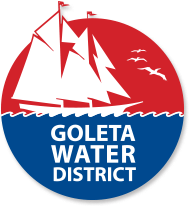How the District Maintains Water Quality
Maintaining Water Quality in the Face of Changing Conditions at Lake Cachuma
The District constantly monitors water quality, conducting thousands of tests each year to make sure your water is safe and reliable. But eight years of drought and several significant wildfires around Lake Cachuma have made the job of treating your water more challenging and more expensive.
Vegetation that grew in the lakebed during dry conditions has been re- submerged by winter runoff and is now decaying and releasing organic matter. Further compounding the problem is that over 70% of the Cachuma watershed has burned since 2010. When it rains, burned trees, ash, and loose soil are washed into the lake. In addition to increasing the level of organics in the lake, this material is high in phosphorus and nitrogen and acts as fertilizer to feed algae that grows in the water. All of this organic matter must be treated and removed.
Since chlorine is used to disinfect the water, disinfection byproducts (DBPs) are formed as a side effect of the treatment process when it reacts with organic matter. As a result, the District has had made a number of operational modifications and changes to its treatment process in order to maintain water quality.
How the District Treats and Delivers Water to its Customers
Surface water supplies are delivered from Lake Cachuma to the District’s Corona Del Mar Water Treatment Plant via the Tecolote Tunnel, a six-mile-long tunnel through the Santa Ynez Mountains, originally dug in the early 1950s.
The plant was originally constructed in 1973, with a series of sedimentation and flocculation ponds and a state-of-the-art water treatment facility. Significant upgrades to the treatment facilities and plant were completed in 2010.
To monitor water quality, the District samples water coming in and out of the plant. Once water from the lake enters the water treatment plant, powdered activated carbon (PAC) is added to remove organic matter and improve taste and odor. The water is further polished as it moves through the flocculation chambers and sedimentation ponds. Water is the then purified by passing through very large Carbon filters, which act like a sponge to remove additional fine particles from the water. The final step is disinfection with chlorine to prevent bacterial growth in the distribution system for delivery to customers.
The District has also implemented operational modifications and treatment changes in the distribution system to mitigate water quality issues. This includes the blending of surface water with groundwater, which is naturally low in organic matter, and the addition of aeration treatment in the District’s reservoir network. The Fairview Reservoir aeration system uses fixed nozzles. The Ellwood Reservoir aeration system uses two different commercially available floating spray aerators.
Aerations systems improve water quality by spraying water and blowing air into the water, both of which helps volatize and remove chlorine byproducts that form as water travels through the system.
The District is collecting performance data on these systems and will analyze the results to determine the best combination of treatment technologies for other reservoirs.
No one can predict with certainty how the current water quality challenges will play out, but the District is prepared to be nimble and flexible so that we can handle a wide range of scenarios. The incremental approach ensures we can continue to rapidly adapt to changing water quality conditions, while ensuring you receive safe, reliable water at a reasonable cost.
(Published July 17, 2019)

